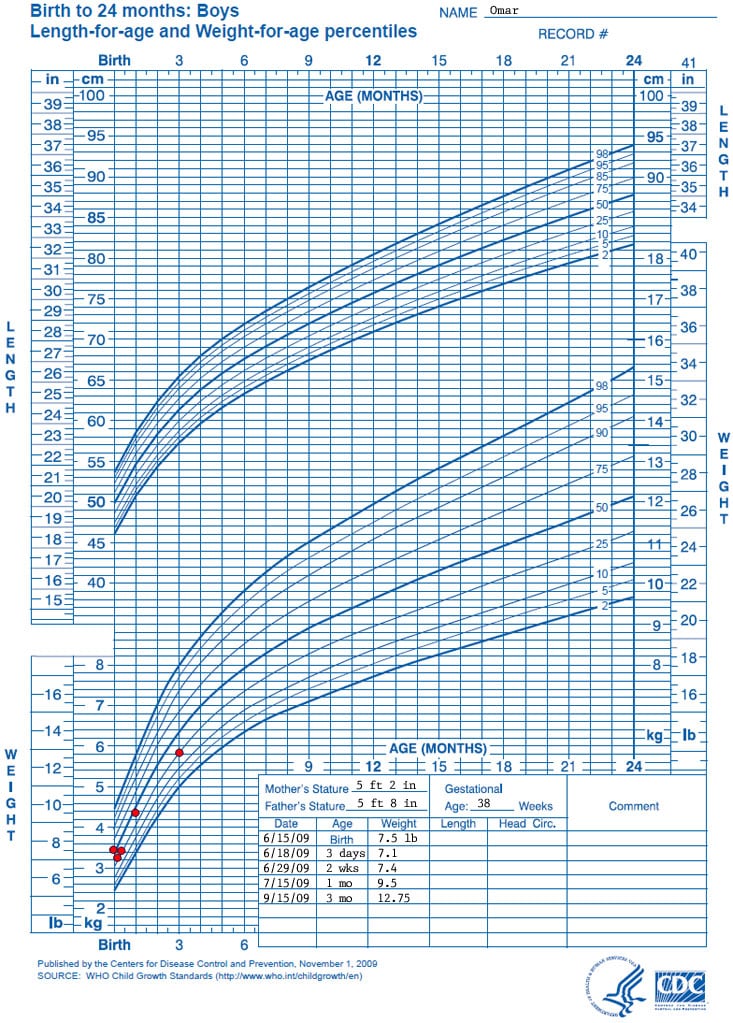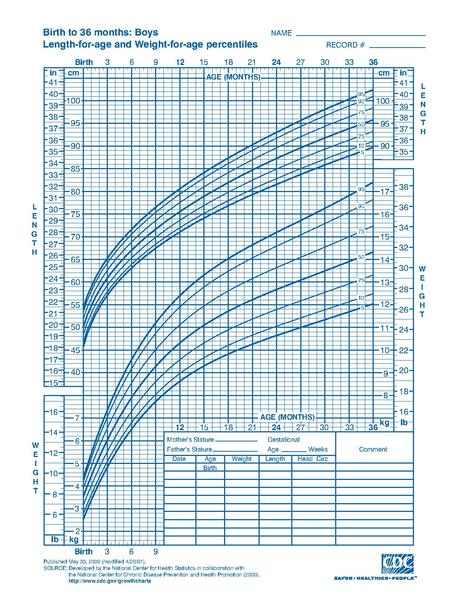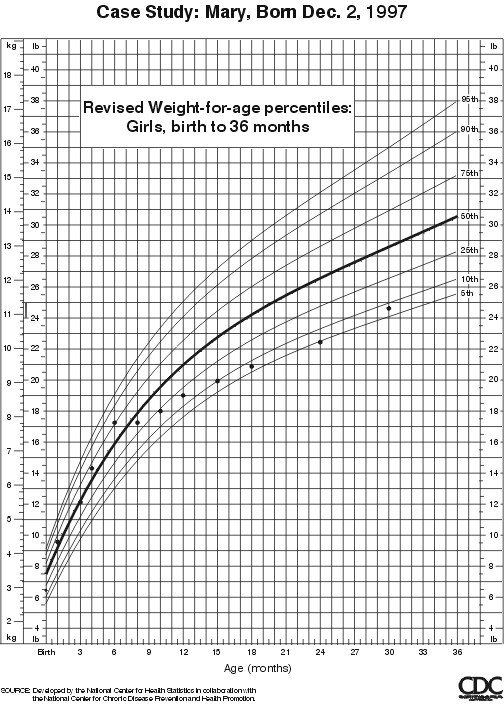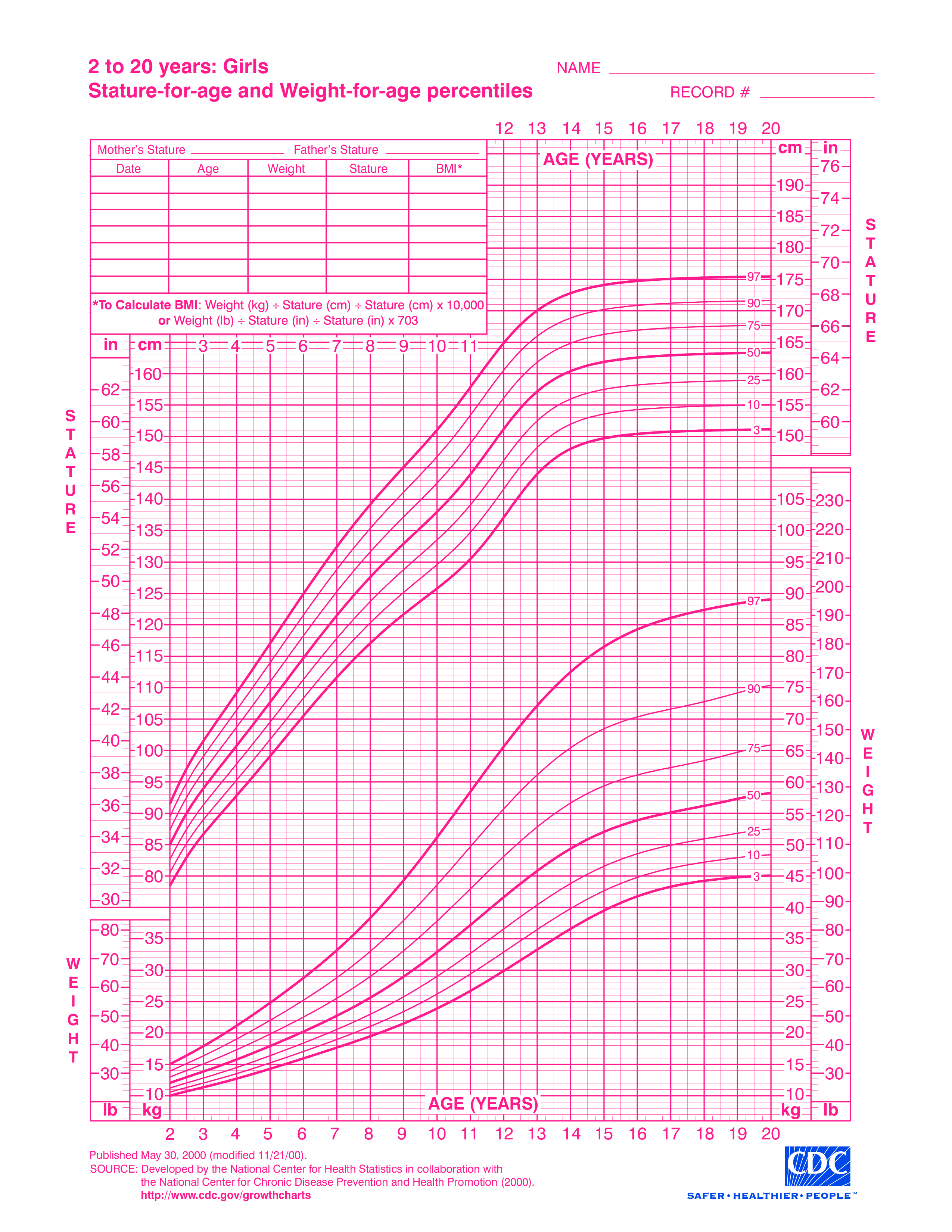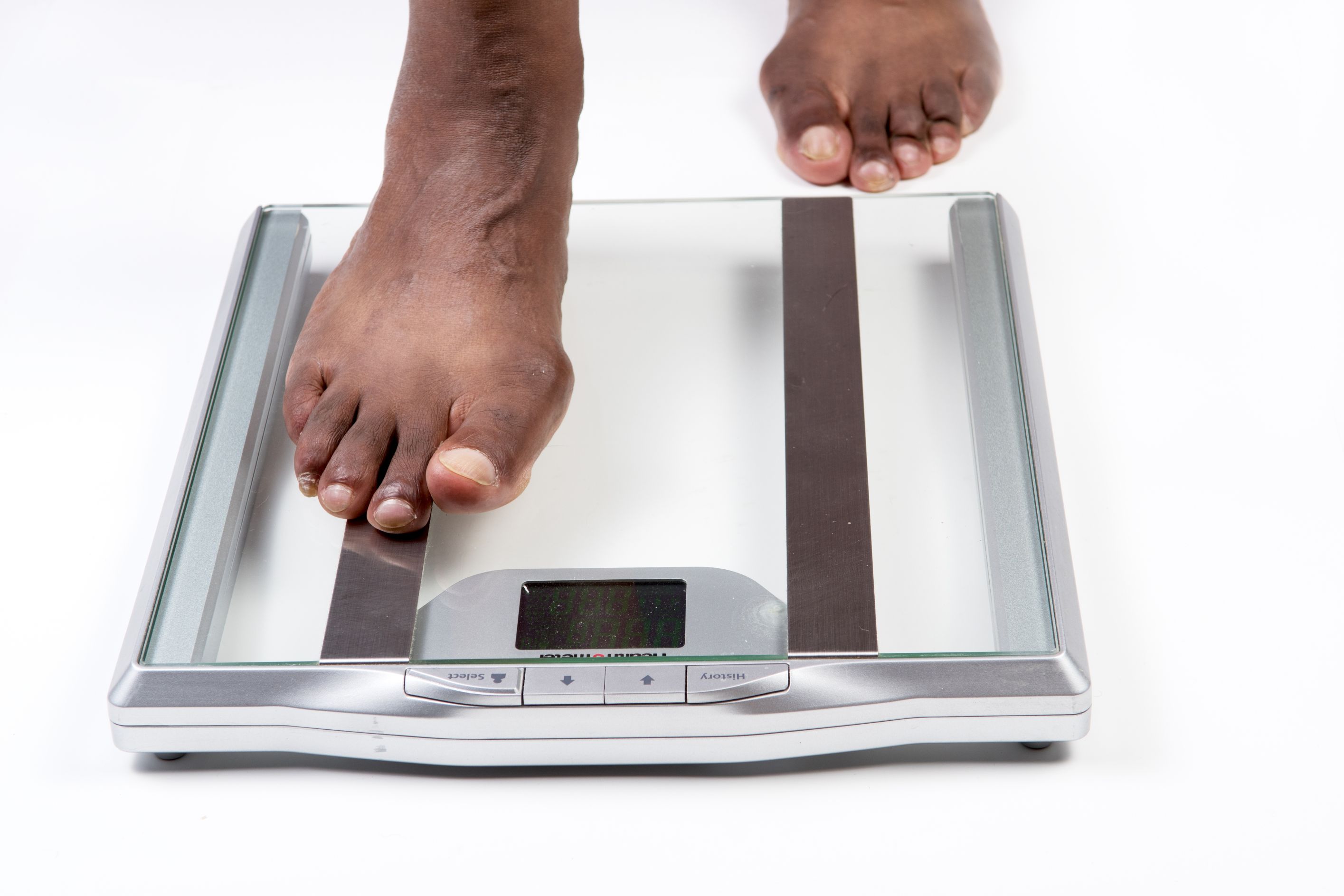Center For Disease Control Weight Chart
Saving Lives Protecting People.
Center for disease control weight chart. This study evaluated the agreement of growth charts proposed by the National Center for Health Statistics NCHS1977 Centers for Disease Control and Prevention CDC2000 and World Health Organization WHO2006. Similarly the World Health Organization WHO shared the. Achieving and maintaining a healthy weight includes healthy eating physical activity optimal sleep and stress reductionSeveral other factors may also affect weight gain.
2000 CDC Growth Charts for the United States. CDC recommends that health care providers. 003443526 x 703 242 which is a BMI that falls into the normal-weight range.
For a full list of topics. Links with this icon indicate that you are leaving the CDC website. Weight is another aspect that can be affected by multiple factors like height gender and body frame.
Agency devoted to the protection and promotion of public health. However all health care providers should consider using the BMI-for-age charts to be consistent with current recommendations. Linking to a non-federal website does not constitute an endorsement by CDC or any of its employees of the sponsors or the information and products presented on the website.
The first baby growth chart was developed in 1977 by the National Center for Health Statistics NCHS. Comparison of body weight and height of Israeli schoolchildren with the Tanner and Centers for Disease Control and Prevention growth charts Pediatrics. Centers for Disease Control and.
Individual growth chart 3rd 5th 10th 25th 50th 75th 90th 95th. Pediatric growth charts have been used by pediatricians nurses and parents to track the growth of infants children and adolescents in the United States since 1977. Weight and length measurements were obtained from a pooled longitudinal sample.
Or you can input your numbers into one of the many BMI calculators. Use this calculator for children and teens aged 2 through 19. CENTERS FOR DISEASE CONTROL AND PREVENTION GROWTH CHARTS 56 52 48 44 40 36 32 28 24 20 lb lb 56 52 48 44 40 36 32 28 24 20 60 in cm 31 32 33 34 35 36 37 38 39 40 41 42 43 44 45 46 47 kg kg 19 18 17 16 15 14 13 12 11 10 9 8 27 26 25 24 23 22 21 20 26 25 24 23 22 21 20 19 18 17 16 15 14 13 12 11 10 9 8 28 29 30 31 32 33 34 64 68 72 76 kg lb lb kg 80 85.
Fad diets may promise fast results but such diets limit your nutritional intake can be unhealthy and tend to fail in the long run. Or high blood pressure you should try to lose weight. The National Center for Chronic Disease Prevention and Health Promotion 2000.
Developed by the National Center for Health Statistics in collaboration with. Healthy eating features a variety of healthy foods. 150 4356 003443526.
BMI was calculated from self-reported weight and height weight kg height m²Respondents reporting weight 50 pounds or 650 pounds. BMI screens for weight categories that may lead to health problems but it does not diagnose the body fatness or health of an individual. In 2000 the Centers for Disease Control and Prevention CDC provided updated charts.
Centers for Disease Control and Prevention. This calculator provides BMI and the corresponding BMI-for-age percentile on a CDC BMI-for-age growth chart. The Centers for Disease Control and Prevention CDC cannot attest to the accuracy of a non-federal website.
To evaluate the performance of the 2000 Centers for Disease Control and Prevention CDC growth charts in comparison with the National Center for Health StatisticsWorld Health Organization NCHSWHO reference as a tool for assessing growth in healthy breastfed infants. Height 3 feet or 8 feet. Even modest weight loss may help lower the risk of disease.
Table 24 percentile column headings aligned correctly 6 30 2010. Growth charts consist of a series of percentile curves that illustrate the distribution of selected body measurements in children. CDC twenty four seven.
The Centers for Disease Control and Prevention CDC is a US. The weight-for-stature charts are available as an alternative to accommodate children ages 2-5 years who are not evaluated beyond the preschool years. 66 x 66 4356.
Were assessed children between 0 and 5 years old hospitalized in the pediatric wards of a Brazilian school hospital. However according to the Centers for Disease Control and Prevention 13-year-old girls weigh between 344 kg and 543 kg and boys between 358 kg to 557 kg. A baby growth chart is a chart that shows the expected development level of babies at different stages of their early lives.
For younger children either set of reference data could be used. Christine Zeller Department of Community Health Wright State University. How Do I Interpret Body Mass Index Information.
The current Tanner and Whitehouse standards were compared with the new growth charts from the Centers for Disease Control and Prevention CDC. A growth chart is a plot of the percentiles of growth measurements such as weight and height for a population of infants or children. Centers for Disease Control and.
Try the chart or table view. The Centers for Disease Control and Prevention CDC cannot attest to. It is used by pediatricians to assess a childs growth over time.
The 2000 Centers for Disease Control and Prevention growth charts for the United States include population reference data for body mass index BMI-for-age ages 2-19 y and weight-for-stature from 77 to 121 cm. Published May 30 2000.
